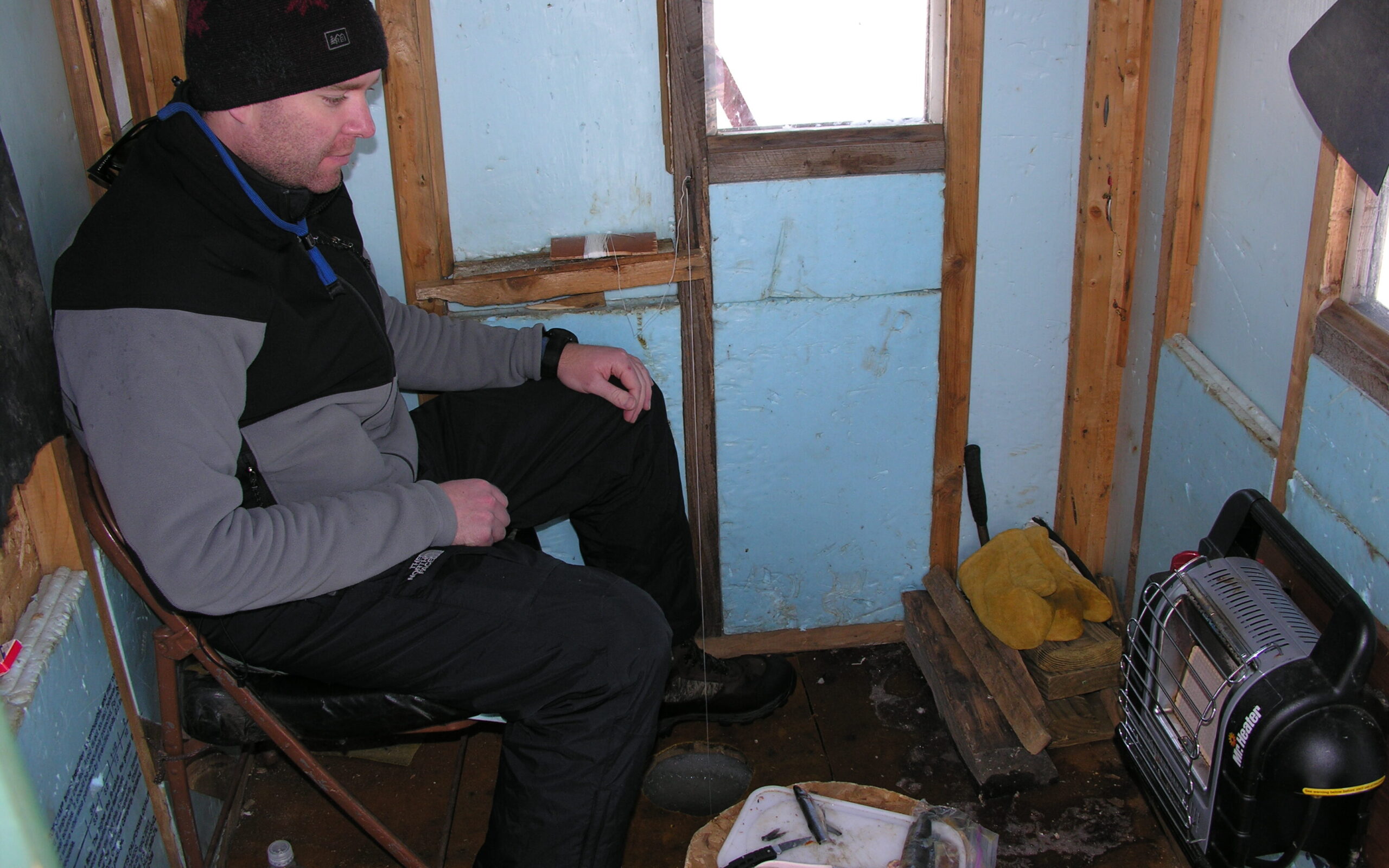
Over the last decade or so, ice fishing regulations have undergone some major alterations, perhaps the most significant affecting when the season begins on certain waterways. Specifically, when a safe layer of ice allows, ”hard water” anglers can fish for smelt as early as November. There’s no doubt that smelt handlining is most consistent the first few weeks, but sufficient ice thickness rarely occurs before December.
Global warming has certainly altered snow cover depths and frigid temperature levels throughout Aroostook the last few years. This year is a prime example. During the first week of January alone, three snowmobiles went through the ice on Long Lake. It’s just sheer luck no lives were lost. It’s hard to tell how many other thin-ice incidents occurred on local lakes but weren’t reported.
The point is that smelt season has been open for weeks and now so are most other species, but ice depths still need to be tested before venturing out.
Pleasant, Big Machias, Long and Scopan comprise a quartet of waterways where safe ice has currently allowed smelt fishing for at least three weeks on certain portions of each lake.

Portable fishing huts allow anglers to easily visit different lakes each outing and quickly set up a warm, wind-free enclosure. They are great for introducing young anglers to the sport of smelt jigging. (Courtesy of Bill Graves)
While most of Long Lake ice was still treacherously thin, the St. Agatha cove region had 5-8 inches of ice and tremendous smelting. Birch Point Cove on Pleasant Pond and Scopan’s area out form the boat launch are both worth a visit.
With over 50 years of smelt fishing experience, I’m still a devotee of handlining with monofilament, small red hooks and a pea-sized crimp-on style sinker. Each of my smelting lines is wound on a wooden handmade bobber that allows me to select a specific length of line and will float when dropped into an ice fishing hole. Notice I said “when,” not “if,” because it’s bound to happen due to cold, stiff fingers.
I tie off the correct length of line and bobbin to a nail or hook in a ceiling beam above the hole in the floor and ice allowing it to hang straight down. A wooden kitchen match, which also floats if dropped, is half-hitched to the monofilament a foot above the water’s surface. The slightest nibble on the bait will cause the match to twitch and jiggle to alert the fisherman and the match offers a quick lift point to set the hook.
My preferred bait is fresh smelt tidbits. Usually I leave a smelt on the bait cutting board in the fishing hut for the next visit or next angler. The smelt is filleted and then each small slab of meat is diced into pieces the size of a pencil eraser. Be sure the skin is attached as that will hold the meat on the hook more solidly. A piece of shrimp, ham, bacon, or Vienna sausage will suffice to catch the first smelt when fresh bait isn’t available.

More smelt fishermen are trying lightweight jigging rods rather than handlines to catch smelt. Both methods work, but it’s a matter of personal preference. (Courtesy of Bill Graves)
An increasing number of smelt fishermen are turning to lightweight, short, ice fishing jig rods to catch smelt. I’m not there yet since I’m not convinced they are as sensitive to light bites as a free-hanging mono line set up. Most of the jig rod enthusiasts are increasing attraction and effectiveness by using a colorful jig or small lure body like a Swedish pimple or DB Smelt with a single baited hook as terminal tackle.
It’s possible to easily change depth using the reel and give some regular motion to the bait with a jigging rod. A rod does allow more hands-on involvement than just sitting and watching a hanging hand line. Many anglers attach an extra hook or two 18 to 24 inches apart above the bottom bait to attract smelt at different depths and allow multiple hook-ups. Electronic fish finders are becoming more prevalent in smelt shanties as well. High-end electronics are so precise you can actually see individual smelt and determine the best depth to set baits.
Despite the diminutive size compared to other game fish, smelt offer fast, consistent action and a tasty treat hard to beat, all from the comfort of a warm, cozy fishing hut.
There’s safe ice and fast fishing taking place right now on a half-dozen area smelt lakes. Folks are catching three or four dozen silver slivers during a couple of hours of fishing at dawn and dusk. These small fish offer big action, so grab your gear and visit a nearby waterway soon.




